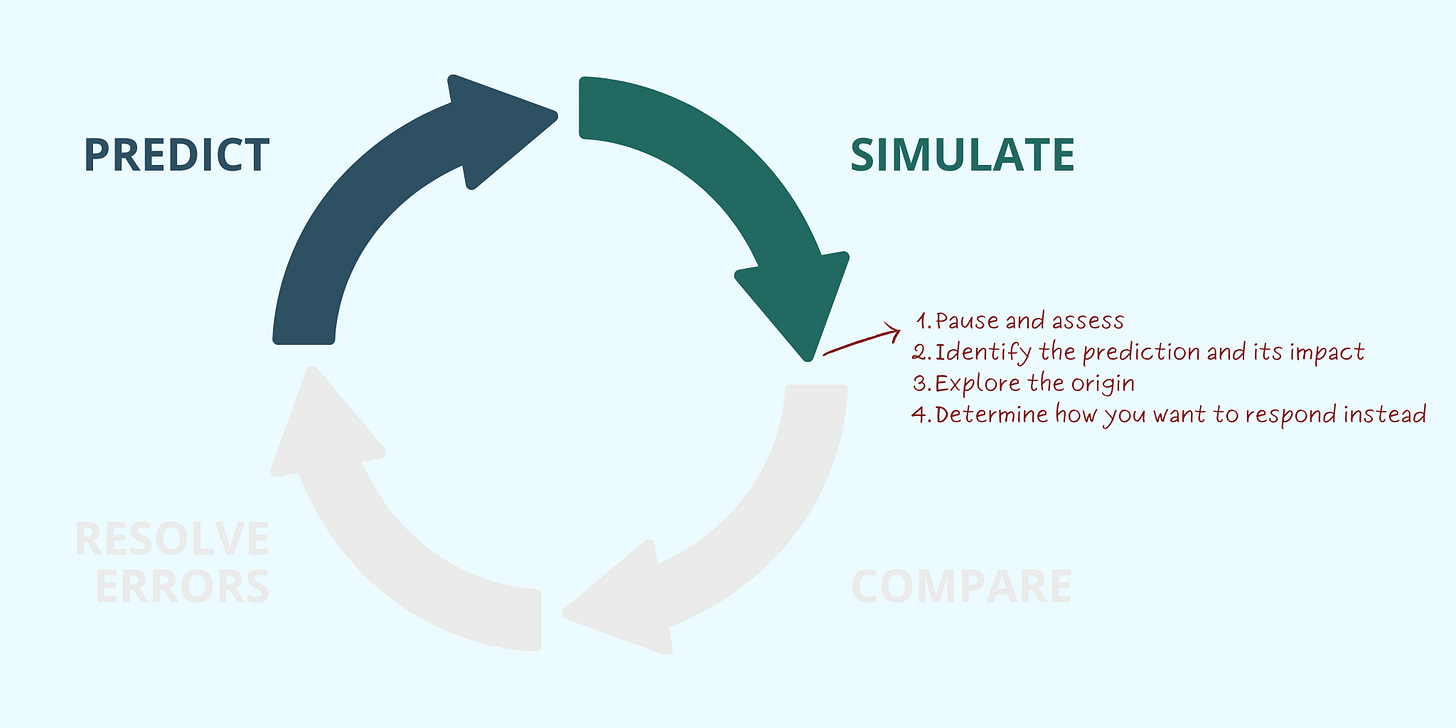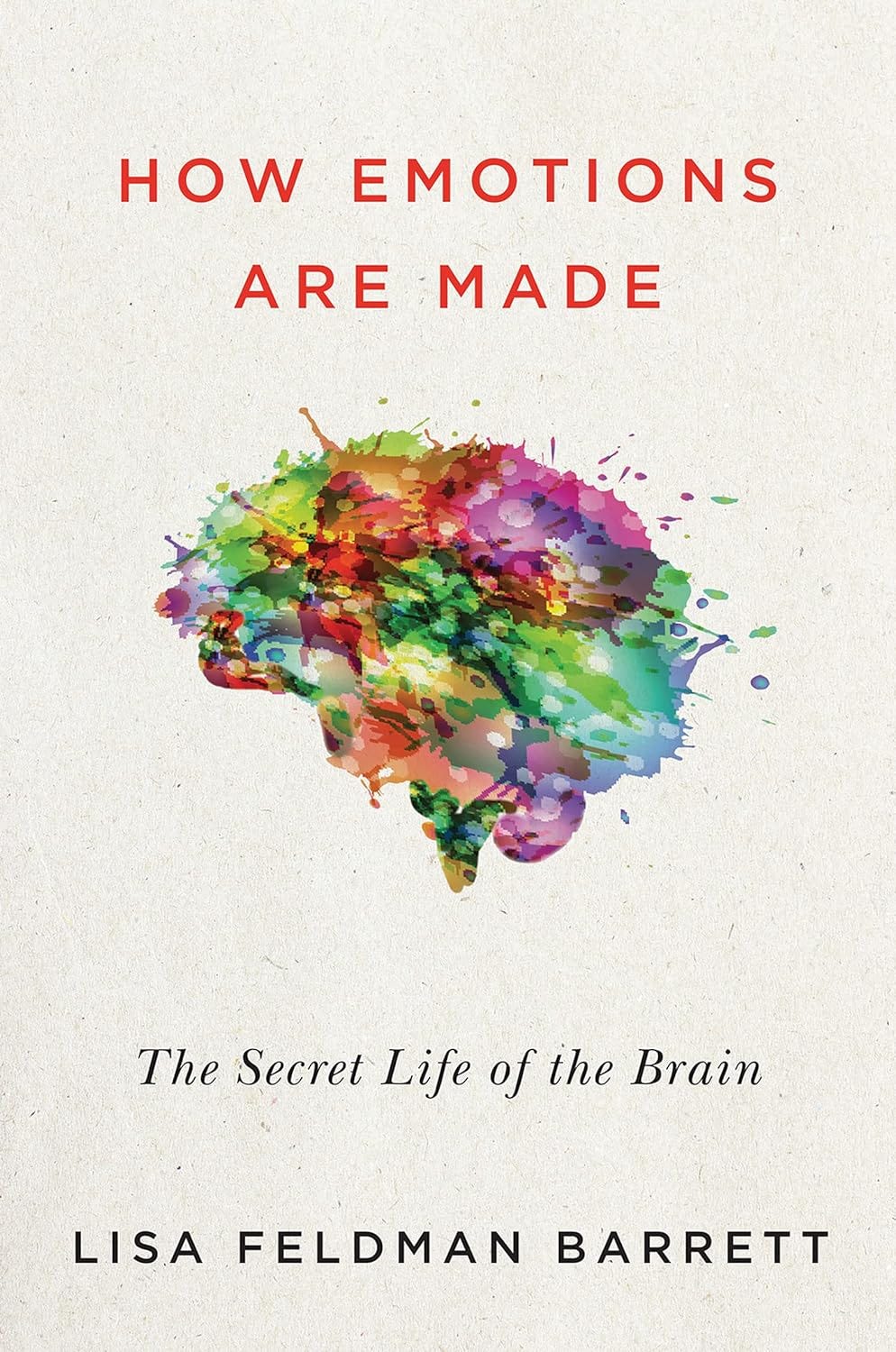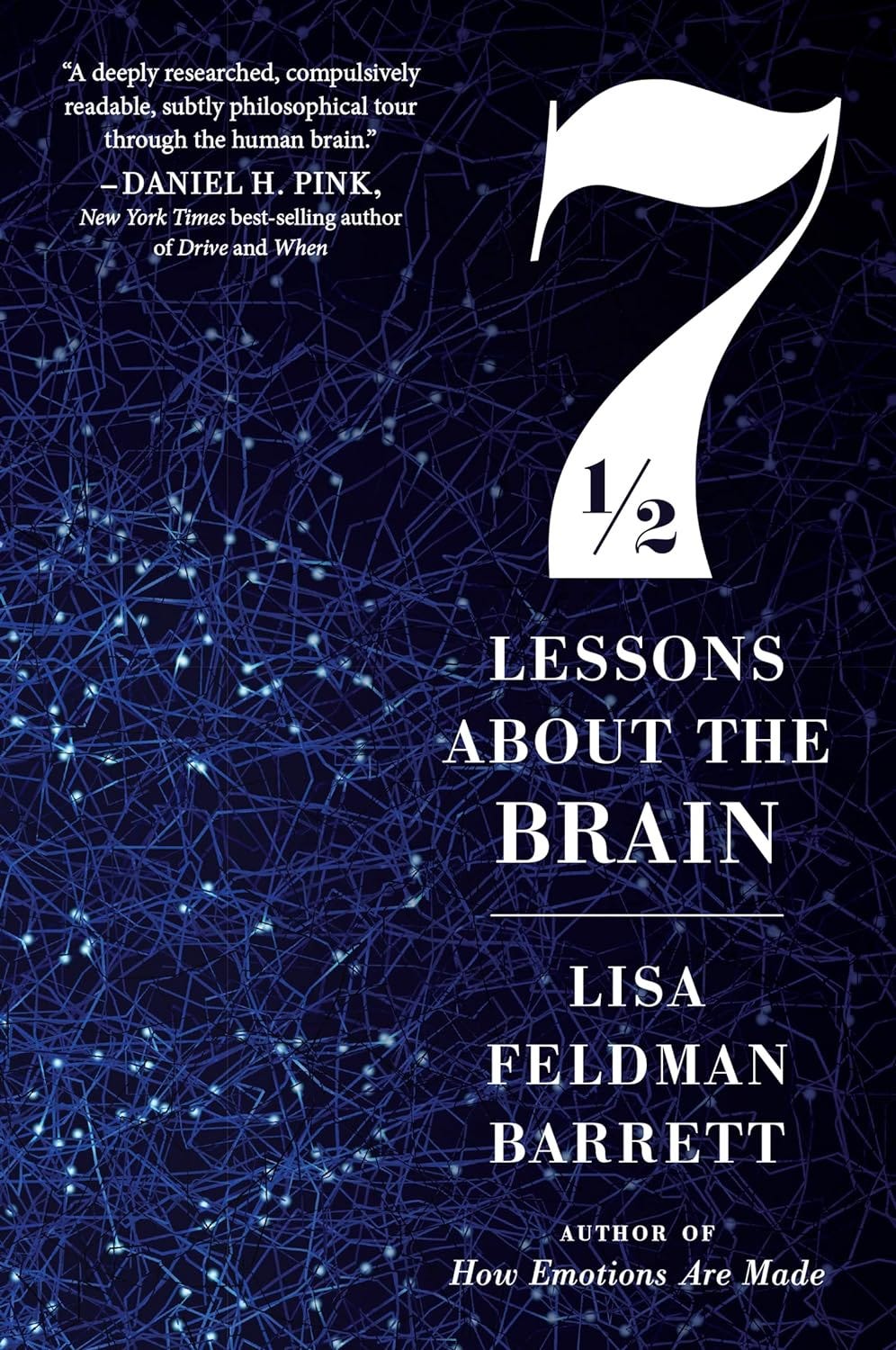The Predictive Nature of Your Brain
Change the patterns that aren't serving the leader you aspire to be
In the summer of 2017, I faced a life-threatening condition that not only tested my physical endurance but profoundly shaped my understanding of how our brains operate based on past experiences. This personal health crisis, a severe case of septic shock, left me battling post-traumatic stress disorder (PTSD), which heightened my brain’s vigilance for threats, real or imagined.
During my recovery, I found my mind frequently inventing potential tragic scenarios based on my surroundings and then planning how to survive them—an extreme example of how our brains use past events to predict and react—often excessively—to current stimuli. This intense response was my brain’s way of trying to protect me, a survival mechanism dialed to its highest setting.
But this mechanism isn’t unique to traumatic events. I recognize this predictive patterning in many of my clients.
One leader previously dealt with a highly critical boss. Even long after moving to a different job, they found themselves involuntarily tensing up when receiving any feedback, bracing for negativity that no longer existed.
Another client, after parting ways with a problematic executive, faced paralyzing hesitation when hiring a replacement, fearing a repeat of past mistakes.
Through personal recovery and deepening my understanding and application of neuroscience, I’ve learned to help others identify these predictive patterns, break them, and foster healthier ways of relating.
For leaders, this means pausing to reflect: “Is my current reaction truly about what’s happening now, or is it an echo of the past?”
In this article, I walk you through the neuroscience behind our brains as predictive machines. I introduce ‘The Predictive Loop’ framework, a tool designed to help you break unhelpful cycles and recalibrate your brain’s predictions to better match your present reality, not your past experiences.
Reflection
Before digging into the science, let’s connect this topic to your experience.
Use these prompts to deepen your self-awareness and critically evaluate how your learned behavior might be shaping your leadership style in ways that aren’t conducive to your role and how you want to show up.
Identify a Pattern: Reflect on a recent situation where your response felt automatic. What was the situation, and how did you react?
This prompt encourages you to identify a specific instance where your reaction may have been influenced by a pattern rather than a situation itself.
Connect to the Past: Consider your reaction. Can you trace this reaction back to a past experience? What similarities do you see between that past experience and the recent situation?
This prompt helps you link your current reactions to historical experiences, showing you how past conditioning can influence present behavior.
Assess the Impact on Your Leadership: How might this recognized pattern be affecting your decisions and interactions as a leader? In what ways could understanding and adjusting these patterns improve your effectiveness and the well-being of your team?
This final prompt pushes you to think critically about the impact of this pattern on your leadership and explore potential benefits of recalibrating your response to align more closely with your current reality and leadership goals.
The Neuroscience
Understanding how your brain functions as a predictive machine can be a key to your personal reactions and leadership style. Neuroscience shows that your brain constructs perceptions and emotions based on predictions, not just reactions to the world. This process, influenced by your past experiences, culture, and language, is essential for conserving cognitive energy and enabling you to respond efficiently to the world. These predictions occur so rapidly that they often feel like immediate reactions, though they are not. Recognizing this is important because it’s where we have the opportunity to break the cycle and respond differently.
Your Predictions Shape Perceptions and Emotions
Your brain uses accumulated data to forecast and prepare for what comes next. In a few of my neuroscience courses, I studied with Lisa Feldman Barrett. Her research shows how emotions are constructed by predicting what you’ll need based on environmental cues. This is why, if you had a highly critical boss, you might feel anxiety before a feedback session—not because of what is actually happening, but because your brain anticipates that past emotional experiences will repeat.
You Conserve Energy Through Neural Efficiency
The predictive nature of your brain isn’t just about anticipating threats or rewards; it’s fundamentally about conserving energy. By predicting what will happen next, your brain can use less energy than it would need to analyze every new situation from scratch. This efficiency is necessary in leadership, where quick and effective decision-making is a marker of success. Understanding and managing this predictive process is important because misaligned predictions can lead to costly errors in judgment and decision-making, impacting the overall health and direction of your organization.
The Predictive Loop Framework
The Predictive Loop is a neuroscience-based model that describes how your brain makes sense of the world. It consists of four key steps: Predict, Simulate, Compare, and Resolve Errors. This loop is how your brain learns from experiences and adjusts its predictions over time, optimizing for both energy conservation and response effectiveness.
The Four Steps
Predict: Initially, your brain takes in sensory inputs from both your body and the environment around you. It then uses these inputs to predict what will happen next, drawing heavily on past experiences stored in neural patterns.
Simulate: Following the prediction, your brain creates an internal simulation, generating emotional responses. This simulation is essentially your body preparing for what it expects to need next, based on the prediction.
Compare: Your brain compares the outcomes of its simulation with what actually happens in reality. This step is important for assessing the accuracy of its predictions.
Resolve Errors: If the simulation matches reality, the neural pathways that led to the prediction are reinforced, making them more likely to be used in the future. If there is a discrepancy, your brain works to resolve these errors, adjusting its predictive model based on new data.
Breaking and Reforming the Loop
Recognizing and consciously intervening when your brain relies on outdated or irrelevant predictions is essential to breaking this loop. Here’s how:
Pause and Assess: Take a moment to consider if your initial reaction is truly fitting for the current situation. This helps to prevent automatic responses driven by your past experiences.
Identify the Prediction and Its Impact: Ask yourself what you are predicting might or will happen, and consider the impact of that outcome. This step encourages you to analyze the consequences of your predictions.
Explore the Origin: Reflect on the context or memory that triggered your prediction. Understanding the source of your prediction can highlight why you might expect certain outcomes.
Determine How You Want to Respond Instead: Define what you would prefer to happen instead of the scenario your brain has predicted. This helps in aligning your actions and reactions with your current goals and realities.
Going back to the example of repeatedly tensing up during feedback due to a past critical boss, I worked with my client to recognize this pattern so they could change their expectation and response in future feedback sessions. Instead of preparing for criticism, they practiced approaching the session with openness, asking clarifying questions and discussing how they could improve, creating a new, more constructive outcome in the loop.
Practical Application
By understanding and adjusting the Predictive Loop, you not only respond more appropriately to the present but also actively shape a more accurate and efficient neural pathway for future responses. This proactive approach helps ensure that your leadership style evolves with your current environment, rather than being held back by past experiences.
Recommendations
If you’re looking to further your understanding of cognitive neuroscience and its practical applications in leadership, I highly recommend exploring the works of neuroscientist Lisa Feldman Barrett. Her insights into how our brains construct emotions and perceptions can profoundly impact how we understand and lead our teams.
How Emotions Are Made: The Secret Life of the Brain | Book
This comprehensive exploration into the mechanics of emotion is thorough and enlightening, though it requires a bit of perseverance to get through. It’s perfect if you appreciate a detailed understanding. Find it here
Seven and a Half Lessons About the Brain | Book
A more accessible read, this book offers concise and engaging insights. It provides a fantastic overview without being overwhelming. Find it here
Hidden Brain | Podcast
Don’t miss Lisa Feldman Barrett’s guest appearance where she discusses emotional construction and more. It’s a great way to enrich your knowledge during a drive or while taking a walk. Listen to the episode here
The Challenge
Let’s put these insights into practice!
Start with the pattern you identified during the reflection or choose a different learned behavior that doesn’t align with who you are today and the leader you aspire to be—perhaps it’s how you react to feedback, make decisions under stress, or handle conflict.
Follow the steps to break and reform the loop.
Pause and assess
Identify the prediction and its impact
Explore the origin
Determine how you want to respond instead
Try out your new approach in real-life situations. Afterward, evaluate the outcome. Was your response more aligned with your current goals and how you want to lead? What did you learn from this experience?
By consciously adjusting your brain’s predictions to better match the present, you enhance not only your leadership effectiveness but also the overall well-being of your team.
Final Note
In recognizing your brain as a predictive machine, I hope you feel empowered to change the patterns that aren’t serving the leader you aspire to be. This understanding isn’t just about self-improvement; it’s essential for making informed, effective decisions that reflect your current realities, not past constraints.
I’d love to hear your takeaways from this post. Share your insights in the comments or with me directly by replying to this email.
You have the power to change not just your actions, but the very loops that drive them.
-Amanda
Interested in exploring my coaching practice?
If you’d like to learn more about breaking unhelpful cycles and recalibrating your brain’s predictions to better match your desired leadership style, I offer a complimentary discovery session to assess fit. I’d love to hear from you.










One of my fav topics. George Kelly started it all with his personality theory of personal constructs.